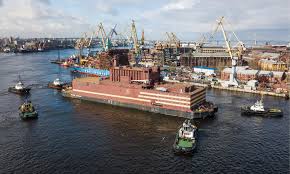
Breaking News
 Watch This BEFORE You Plant Carrots
Watch This BEFORE You Plant Carrots
 What Butter Does to Your Body in 14 Days
What Butter Does to Your Body in 14 Days
 What ACTUALLY Happens When You Pour Vinegar in a Washing Machine?!
What ACTUALLY Happens When You Pour Vinegar in a Washing Machine?!
 Silver Madness: CME Margin Spike + What It Means Next - Mike Maloney
Silver Madness: CME Margin Spike + What It Means Next - Mike Maloney
Top Tech News
 Laser weapons go mobile on US Army small vehicles
Laser weapons go mobile on US Army small vehicles
 EngineAI T800: Born to Disrupt! #EngineAI #robotics #newtechnology #newproduct
EngineAI T800: Born to Disrupt! #EngineAI #robotics #newtechnology #newproduct
 This Silicon Anode Breakthrough Could Mark A Turning Point For EV Batteries [Update]
This Silicon Anode Breakthrough Could Mark A Turning Point For EV Batteries [Update]
 Travel gadget promises to dry and iron your clothes – totally hands-free
Travel gadget promises to dry and iron your clothes – totally hands-free
 Perfect Aircrete, Kitchen Ingredients.
Perfect Aircrete, Kitchen Ingredients.
 Futuristic pixel-raising display lets you feel what's onscreen
Futuristic pixel-raising display lets you feel what's onscreen
 Cutting-Edge Facility Generates Pure Water and Hydrogen Fuel from Seawater for Mere Pennies
Cutting-Edge Facility Generates Pure Water and Hydrogen Fuel from Seawater for Mere Pennies
 This tiny dev board is packed with features for ambitious makers
This tiny dev board is packed with features for ambitious makers
 Scientists Discover Gel to Regrow Tooth Enamel
Scientists Discover Gel to Regrow Tooth Enamel
 Vitamin C and Dandelion Root Killing Cancer Cells -- as Former CDC Director Calls for COVID-19...
Vitamin C and Dandelion Root Killing Cancer Cells -- as Former CDC Director Calls for COVID-19...
Russia plans to tow nuclear power station to the Arctic despite environmental...

Russia plans to tow a floating nuclear power plant 3,000 miles through the arctic circle.
The Akademik Lomonosov, dubbed the 'floating Chernobyl' by its critics, has been under construction for almost two decades and is headed for the small Arctic port town of Pevek.
Currently based in Murmansk in Russia's west, the enormous 144-meter (472 feet) long platform will eventually supply electricity to settlements and companies extracting hydrocarbons and precious stones in the Chukotka region.
The huge power station was built under President Vladimir Putin's ambitious Arctic expansion plans, which have riled US observers.
Putin has stated his intention to develop the region economically, tapping into the hidden Arctic riches of oil and gas as Siberian reserves diminish.
Only two million people currently live in the hostile region but they generate as much as 20% of country's GDP.



